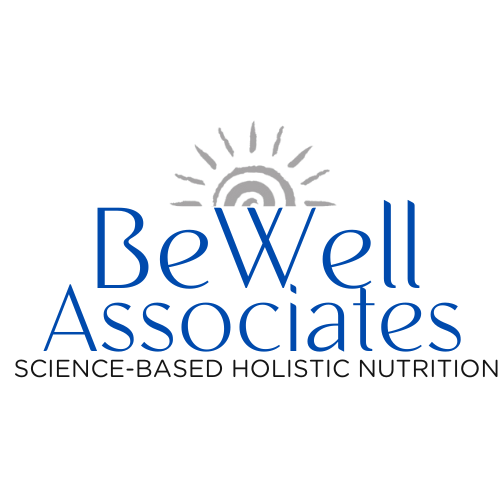Strength training is great for people of all ages. It helps prevent the loss of lean muscle mass, called sarcopenia, which occurs naturally with aging. Loss of muscle mass can begin as early as 30. The loss of mass accelerates from 1% to 5% at 70 years old. Loss of strength occurs at an even faster rate than muscle mass, with a 12-15% decrease every decade after 50. Fear not. Loss of muscle mass and strength is reversible. You have the power to improve both and age with resiliency.
In addition to building muscle mass, strength training improves balance, reduces the risk of cardiovascular disease, balances blood sugar, strengthens bones, improves posture and helps you lose or maintain weight. According to the Journal of Bone and Mineral Research, doing just 30 minutes of strength training twice a week improved bone mineral density, structure and overall strength in postmenopausal women.
Supporting Muscle Mass through Diet
Nutrition plays a vital role in supporting muscle mass. Dietary protein is critical. You should have protein as part of every meal and snack you eat — a minimum of 15 grams per meal and 10 per snack. Without adequate protein intake, your body starts to catabolize or break down itself. This is how you begin to lose muscle. As a result, you cannot build muscle mass or repair muscles even if you do strength training. The daily recommended intake of protein is between 0.8 to 1.0 grams per kilogram of body weight. A higher intake of protein is indicated for those with higher stress levels, physical activity or certain diseases that require more protein. Research has found that older adults need a higher protein intake at 1.0 to 1.3 g/kg of bodyweight. Meaning that for a 120-pound adult older than 65, 54 to 70g of protein each day would be appropriate.
In addition to helping with muscle mass, protein helps you feel satiated, helps balance blood sugar and provides the basis of the building blocks of your body. Hormones like the thyroid hormone are made from protein. Neurotransmitters like serotonin and dopamine are made from protein. Protein is essential for the immune system because it makes antibodies that allow your body to recognize harmful bacteria and viruses. Wound healing, tissue regeneration, hair growth and nerve function wouldn’t occur without protein. So even if you have no interest in muscle mass, it would be wise for you to be mindful of your protein intake.
Good Quality Protein
- Fish are excellent sources of protein. They’re high in essential fatty acids, especially omega-3s, and are one of the only sources of vitamin D in food. Fish takes less time to defrost than other meats when frozen, making it easier to have for dinner on busy weeknights.
- Chicken and turkey — think breast meat, organic sausage or nitrate-free deli meat — make a great protein addition to any meal.
- Bison is higher in protein, iron and omega-3s than beef and has the benefit of always being grass-fed. For beef, look for grass-fed and only 10% fat.
- Beans and quinoa are high in fiber and protein, making them helpful for lowering cholesterol and helping you feel full. Buying dried beans is preferred, but when in doubt, purchase low-sodium canned beans and rinse them. If dried beans and quinoa tend to bother your stomach, try soaking them overnight and then rinsing them before preparing them. This gets rid of phytic and oxalic acid, which can irritate your GI tract and bind to minerals in the beans like iron so you can’t absorb them.
- Full-fat or 2% dairy also makes for a great protein source. Make sure that you get unsweetened and then if you desire, add natural sweeteners like fruit, organic honey or maple syrup if needed. Natural sweeteners from whole foods sources are better than artificial sweeteners, added sugars and even Stevia.
- Nuts and seeds have protein, healthy fats, fiber and are extremely nutrient-dense. Look for unsalted nuts and pay attention to if they have been roasted in any hydrogenated oils. Dry roasted means no oil at all.
Easy Ways to Add Protein to Meals & Snacks
- Protein powder. Add full scoops into smoothies or sprinkle some into oatmeal, yogurt parfaits, homemade breads or even homemade chocolates. (Check out BeWell Associates’ website for a chocolate peanut cup recipe that uses chocolate protein powder.)
- Organic, nitrate-free deli meat. Add this to salads, omelets, wraps or consume it as part of an easy snack. Any busy mom can eat a banana and three slices of deli meat on the side.
- Nut butters. Make sure they are made without hydrogenated fats, added sugars or preservatives. Add it to smoothies, serve on top of oatmeal, have it on whole-grain toast or as part of snack to balance out the sugar in fruit.
- Canned salmon and tuna in water or olive oil. Add the fish to salads and wraps. These are great to have for lunch when you don’t have time to cook.
- Beef, turkey or venison jerky. Look for a limited ingredient option with no added sugar and free of nitrates.

Article from Centered Magazine https://www.statecollegemagazine.com/articles/muscle-mass/





Add Comment